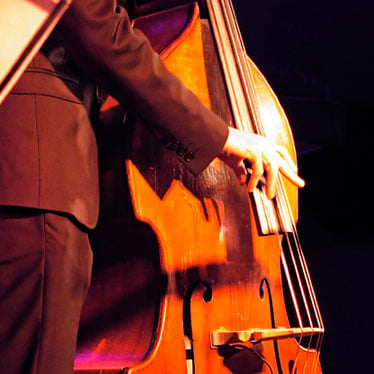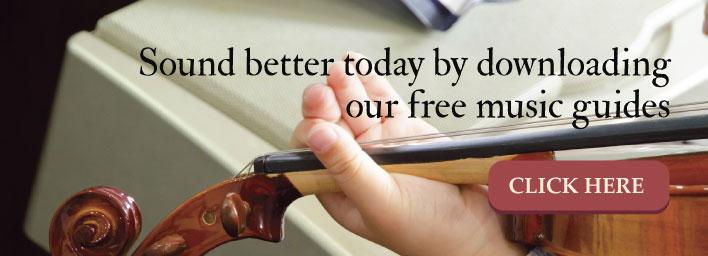Tips For Learning To Play Jazz And Upright Slap On Your Bass

As a bassist, you're used to standing in the back row of the orchestra. You get more attention as part of string quartet. As wonderful and lyrical as classical music is, there are other styles of music that put the upright bass front and center.If you're curious about how to play other styles of music on your bass – and you should be, even if only to improve your overall technique and musicality – here are some tips to get you started.
Use the right lingo
Start thinking of your instrument as the "upright bass." As if the bass didn't have enough names to make things confusing, I know. But if you're going to start looking for exercises and music to learn how to play your bass in rock or jazz, you need to make the distinction between the bass you play and the bass guitar. Otherwise, things will get confusing. So in the non-classical music world, you're playing an upright bass or standup bass.
Jazzing it up
In jazz, the bass player is there to frame the harmony being played or performed by other instruments and/or the vocalist. Used as a percussive instrument, the bass line sets off the harmony by creating the underlying groove of the song.
When you read a basic jazz lead sheet or chart, you'll see the melody in chord symbols. Since jazz prizes improvisation, the bassist has a lot of freedom to create the riffs and lines that will fill out the melody.
But you need to start somewhere. Jazz bass is all about scales, chords and arpeggios, drops, and understanding chord intervals. Bass players generally play the low harmonic notes (root, 3rds, 5ths, 7ths). Go back to each root note and practice all the chord intervals and get comfortable with the patterns.
The typical jazz bass pattern is quarter notes, called a "walking bass line." Eighth notes are used to emphasize rhythm, both on and off-beat. This is the kind of mix-up that thrives in jazz. Slow things down with whole and half notes. Last, when it's time for your solo (bassists get solos in jazz!), speed things up with sixteenths and triplets.
For some inspiration, check out these amazing jazz bass performances.
Upright Slap goes global
To go in a completely different direction, you should look into Upright Slap bass music. Upright slap is a bass performance comprised of plucking techniques joined with disjointed percussions. It's most widely heard in rockabilly music, but also appears in Tejano and gypsy music. Here's a sample from Stéphane Barral.
There are two primary groups of actions in Upright Slap: plucks and slaps. This style of bass play is off the edge enough that there isn't much formalized language around it. So when you look into it, you may find different lingo, but here are the basic moves:
- Pluck moves: There is the traditional pizzicato plucking motion. This move is common in jazz and rockabilly, pulling the string away from the fingerboard. In Upright Slap, you also have the "snap," which is stronger than a pluck. To snap, you want to pull the string hard and fast enough that it snaps back against the fingerboard. Both are percussive moves, but the snap brings a more aggressive sound. Plucks can be performed in intervals for a melodic sound.
- Slap moves: A basic slap move is exactly what it sounds like. The player slaps their hand against the strings hard enough to press them against the fingerboard. Since multiple strings are involved in a slap, as opposed to a pluck move, it brings a more un-pitched sound. Slaps provide rhythmic emphasis and breaks between harmonies and melodies.
Other slaps are made against the soundboard. These are purely percussive, but you can change the nature of the sound by how much of your hand or fingers you use, where on the soundboard you slap, and how hard you slap. These moves are often done alternating with snaps. Faster, longer sequences of alternating snaps and slaps are commonly called "gallups."
Hopefully this has whetted your interest in expanding your bass playing beyond classical music. Even if you practice and play some forms for fun, while you keep one for serious focus, the more musical styles you learn, the better you'll be at all of them.


